Ongoing Projects
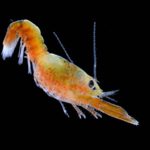
Understanding larval American Lobster growth and recruitment in a changing climate: Working in collaboration with the Maine Department of Marine Resources, this project will adapt and test a new early life history tagging method to answer key questions about growth and development phenology in larval American lobsters. Results will inform understanding of lobster recruitment success, population dynamics, and growth rates within the Gulf of Maine under current and future climate conditions. This project started in spring 2025, check back soon for more information!
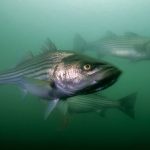
Striped bass foraging ecology in the Gulf of Maine: While striped bass diet has been documented in the Mid-Atlantic Bight and Southern New England regions of the U.S. Atlantic, to date there has not been a comprehensive assessment in waters of the Gulf of Maine. This project will fill this knowledge gap by understanding how striped bass diet varies across body size, age, sex, location, and season along the coast of Maine. Striped bass diet will be evaluated over short and long-term scales using stomach content and stable isotope analyses. In addition, the nutritional quality of key prey species will be quantified by measuring trophic level, energy density, lipid and protein content. This project is working cooperatively with recreational fishermen to obtain samples, for more information click here.
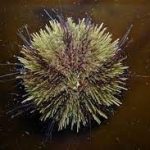
Disentangling the effects of climate change and fishing pressure on sea urchin populations in the Gulf of Maine: Over the last 3 decades, sea urchin (Strongylocentrotus droebachiensis) populations in the Gulf of Maine have experienced precipitous declines in landings and abundance. The aim of this project is to take a holistic approach to evaluate the discrete and combined effects of climate change drivers, harvest, and ecological relationships on regional sea urchin population dynamics. We will investigate whether sea urchin abundance, persistence, and size are associated with spatial or temporal changes in regional climate conditions. We will also evaluate ecological factors that may have contributed to sea urchin declines and may be preventing the recovery. This project launched in fall 2024, check back soon for more information!
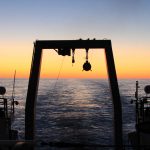
Assessing and adapting Maine’s marine resources in a changing climate: The Gulf of Maine is a region undergoing rapid warming due to the impacts of climate change. In response, coastal and marine fish stocks are shifting their range and phenology over spatial and temporal scales. To remain effective in measuring and tracking key population metrics, fisheries managers need to make adjustments to their survey designs that account for climate-related changes in distribution, growth, and production. The aim of this project is to work collaboratively with the Maine Department of Marine Resources to conduct a review of the State’s marine resource monitoring programs and develop a suite of species and method-specific climate adaptation strategies and actions. This project has just launched, check back soon for more information!
 Seabird diets in a warming climate: An assessment of critical and emergent trophic relationships of terns in their Northern breeding range: The Northeast coast is a seasonally important breeding area for colonial nesting seabirds including state listed Common terns (Sterna hirundo) and federally listed Roseate terns (Sterna dougallii). During this critical period, these specialized predators are place-based foragers and highly dependent on local prey resources to support chick growth and survival. Using long-term historical datasets and new diet surveys, this project is evaluating how climate-induced changes in historically important forage fishes such as herring and sand lance and the influx of emergent prey affect tern nutrition and productivity. We are also testing the effectiveness of how different camera technologies and AI pipelines can assist in monitoring chick provisioning at colonies with limited resources and integrate with coast-wide networks.
Seabird diets in a warming climate: An assessment of critical and emergent trophic relationships of terns in their Northern breeding range: The Northeast coast is a seasonally important breeding area for colonial nesting seabirds including state listed Common terns (Sterna hirundo) and federally listed Roseate terns (Sterna dougallii). During this critical period, these specialized predators are place-based foragers and highly dependent on local prey resources to support chick growth and survival. Using long-term historical datasets and new diet surveys, this project is evaluating how climate-induced changes in historically important forage fishes such as herring and sand lance and the influx of emergent prey affect tern nutrition and productivity. We are also testing the effectiveness of how different camera technologies and AI pipelines can assist in monitoring chick provisioning at colonies with limited resources and integrate with coast-wide networks.
Recently completed Projects

Exploring the life and death of the North Atlantic Right Whale “Staccato”: Staccato was an endangered North Atlantic Right Whale (Eubalaena glacialis), killed by a ship strike in 1999 and whose remains are housed in the Natural History Collections at UMass Amherst. This project collaborated with the artist Courtney M. Leonard to provide the scientific underpinning for the latest installment in her visual and auditory response “BREACH: LOGBOOK 24 | STACCATO”. The science and art explored the kinship associations of North Atlantic Right Whales, importance to Indigenous heritage, and threats to migratory whales including fishing, shipping traffic, wind energy development, and climate change. The culmination was an art installation at the UMass Museum of Contemporary Art, which featured a science room and story map focused on the life, death, and conservation of Staccato and her relatives.
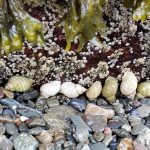
A novel monitoring framework to assess intertidal biodiversity in mixed coarse substrate habitats across the Boston Harbor Islands: This project is developing a standard and repeatable monitoring framework to track changes in intertidal biodiversity over time and across locations in mixed coarse substrate habitats of the Boston Harbor Island National and State Park. Results are intended to assist the National Park Service and their partners adapt natural and cultural resources to rising sea level and storm surge impacts and in anticipation of coastal adaptation projects. More information can be found on the CASC Project Explorer and in a recent blog from the perspective of a project intern.
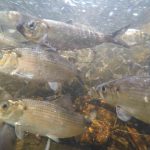
Integrating climate change into State Wildlife Action Plans: This project is synthesizing current climate and adaptation information for Northeast Regional Species of Greatest Conservation Need (RSGCN) in support of the 2025 revisions of the State Wildlife Action Plans (SWAPs). Climate projections across the Northeast Association of Fish & Wildlife Agencies (NEAFWA) region, biological responses to climate change for 418 RSGCN, Climate Change Vulnerability Assessments, and climate adaptation strategies and tools are being synthesized to assist states integrate climate data into their 10-year planning documents. More information can be found on the CASC Project Explorer Page.
